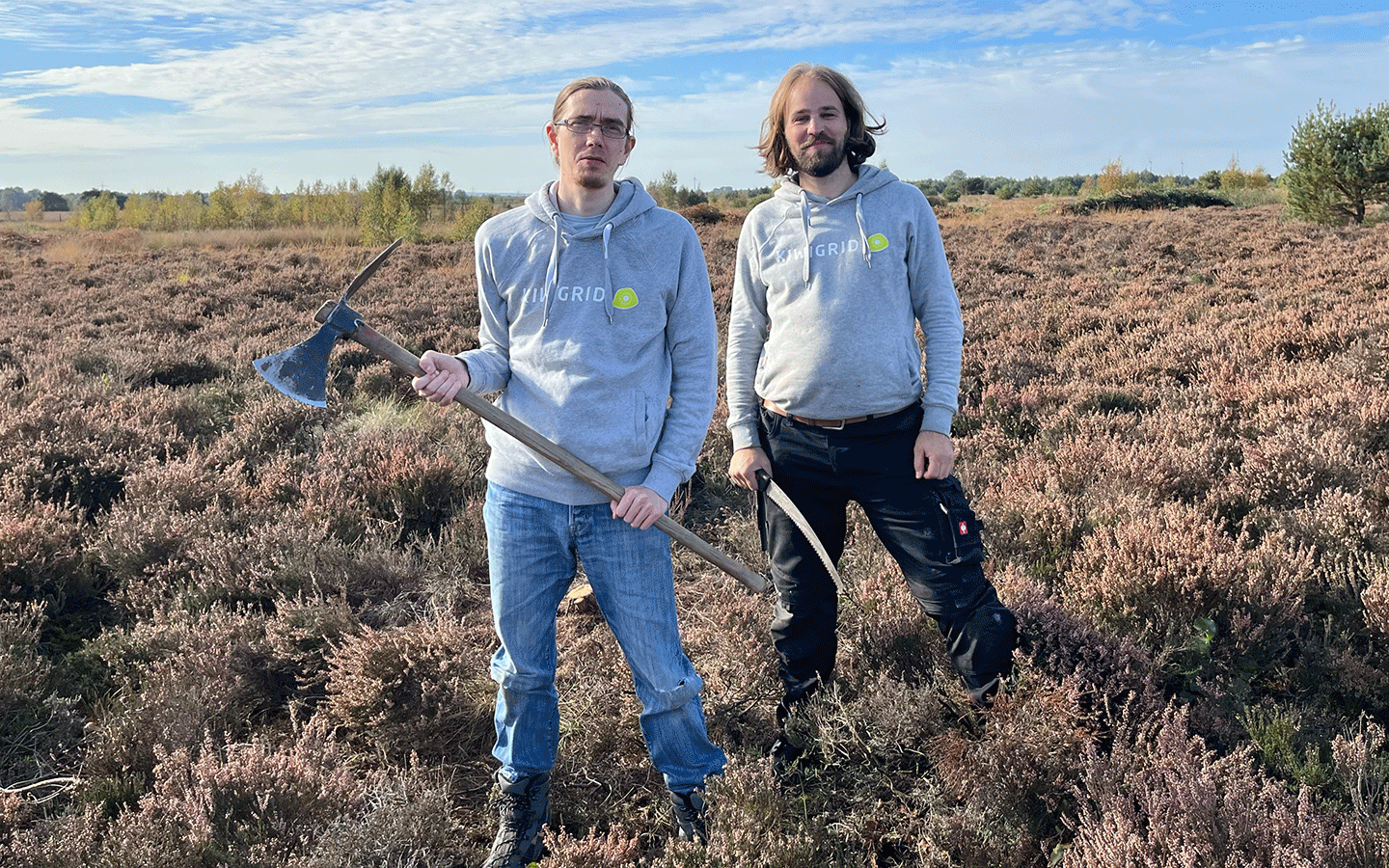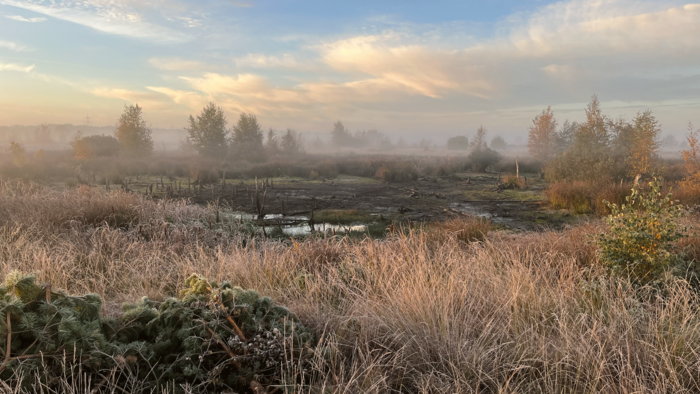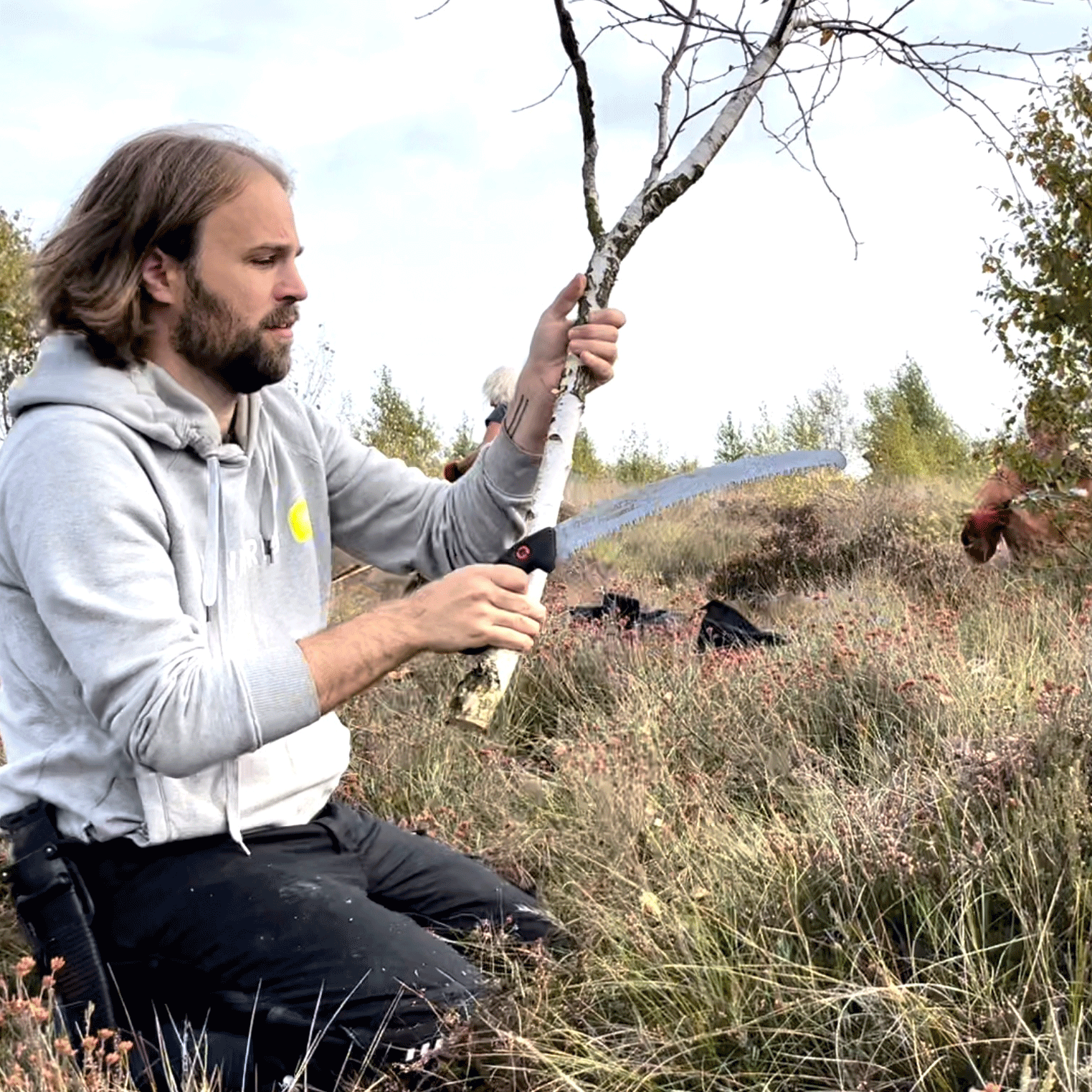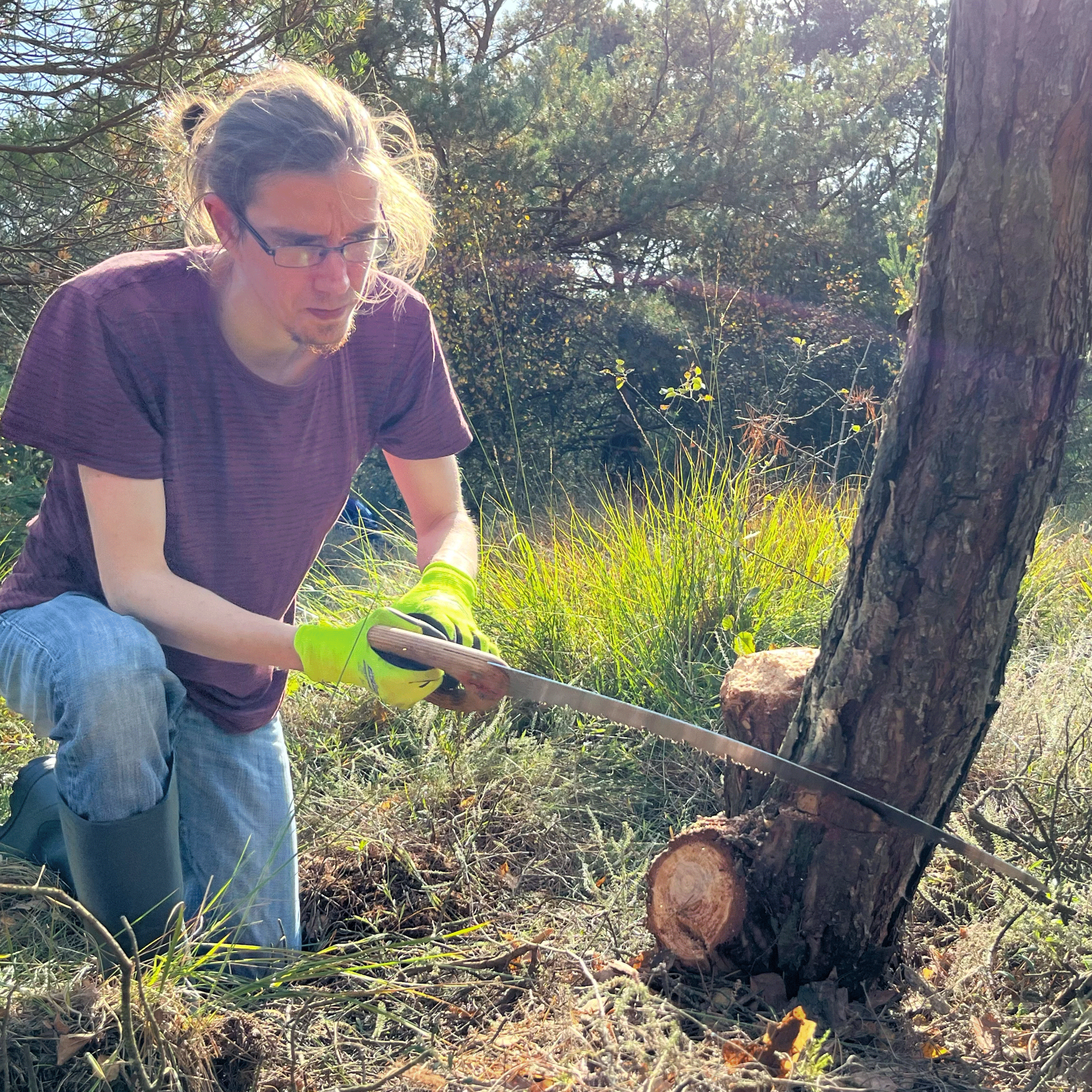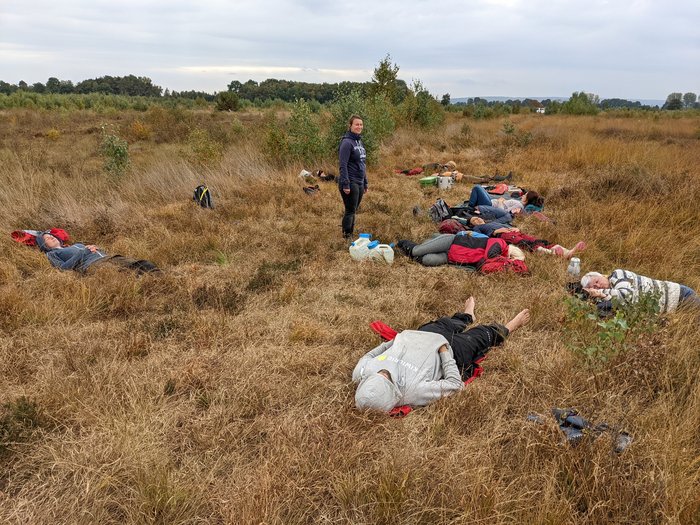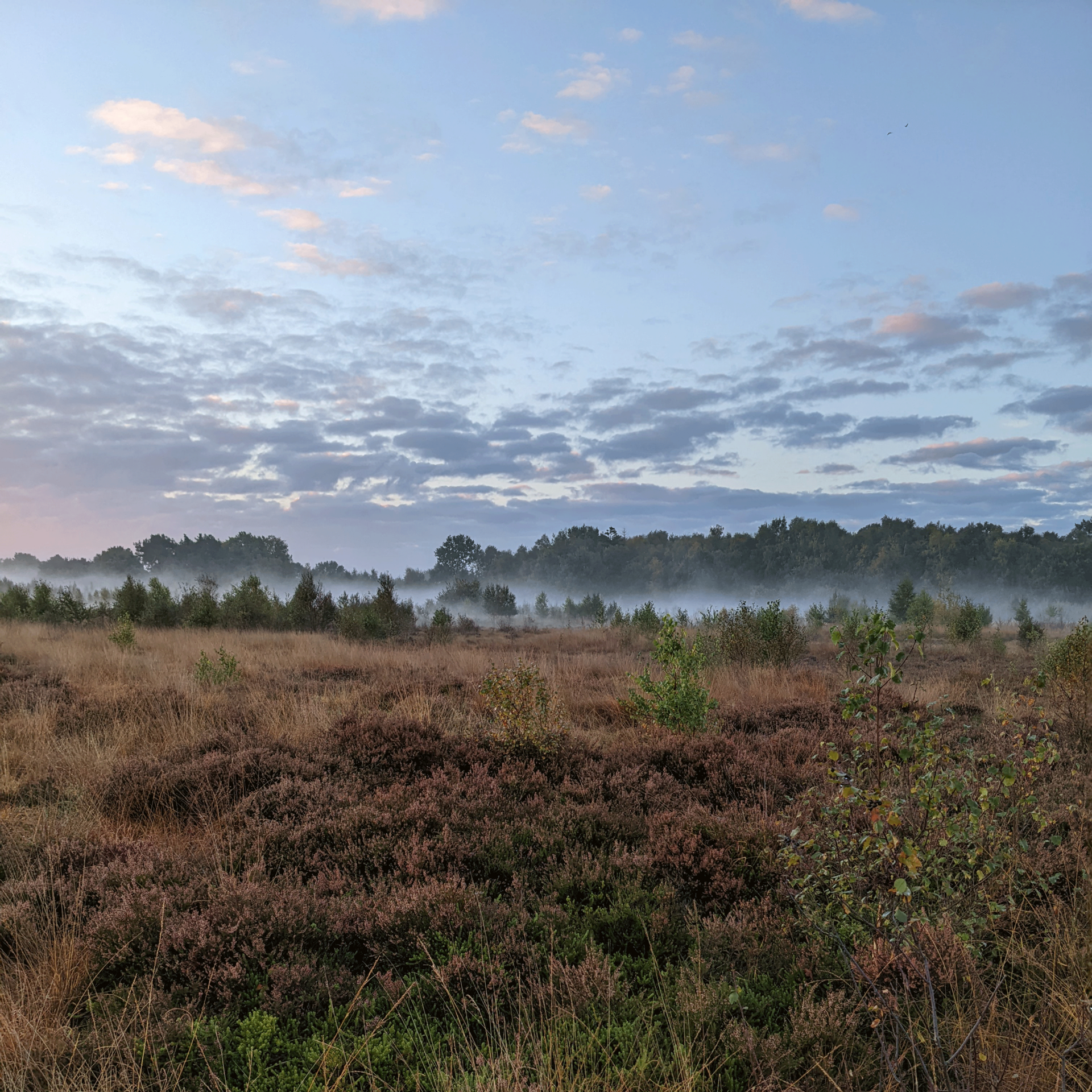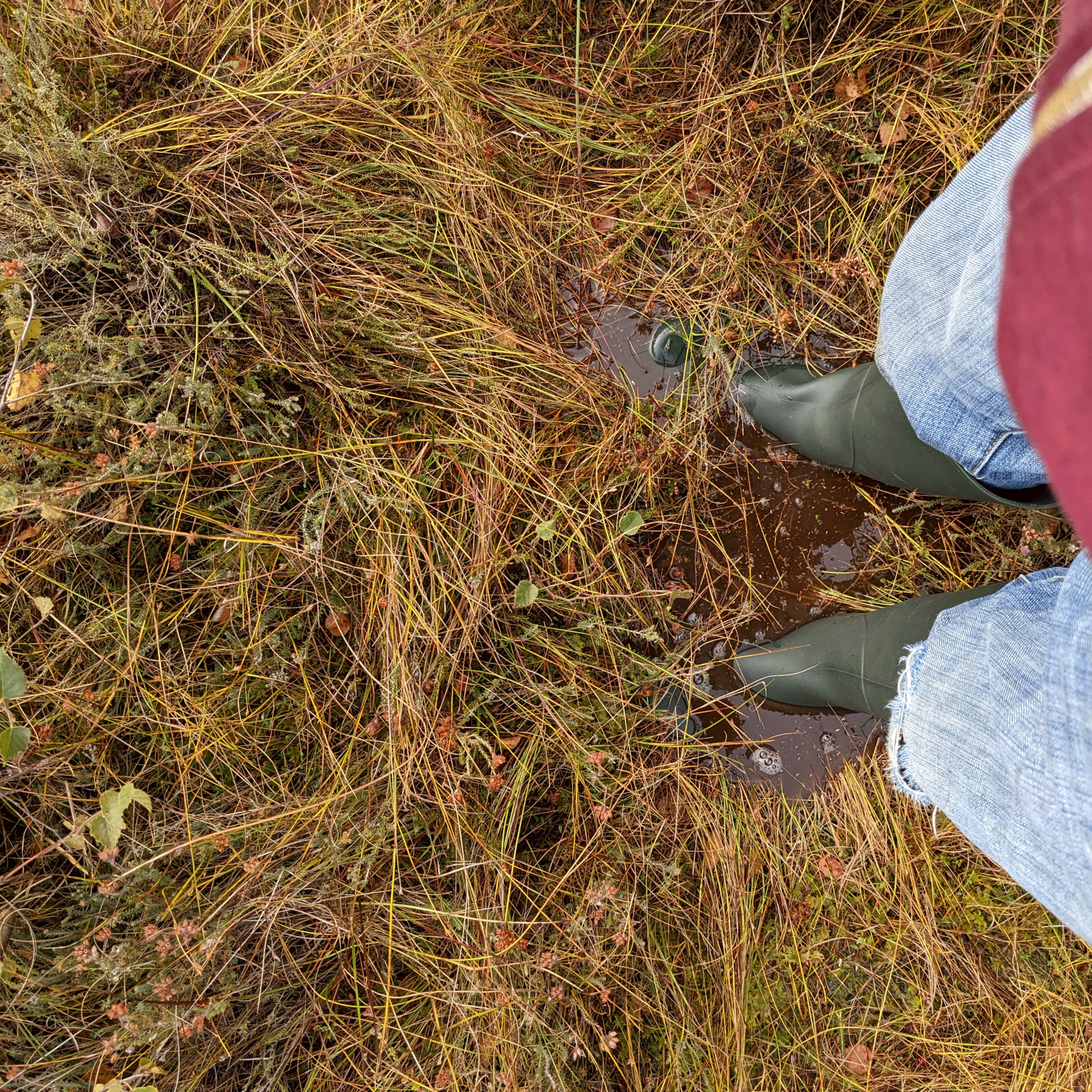Dried-up bogs threaten our climate, because when CO2 stored in the soil can no longer be bound due to a lack of water, it escapes into the atmosphere. Martin Himstedt (Product Communication Manager) and Stefan Gottschalk (Senior Software Developer) are aware of this problem. They have therefore decided to spring into action and spent a week putting all their energy into ensuring that the Diepholz moors in Lower Saxony can become wet again in the future.
Why dried-up peatlands are harmful to the climate
In Germany, many bogs have been drained in order to extract the valuable peat, which can be used for heating or spread on the land for agriculture. The consequences for the climate were disregarded. In bogs, the stored CO2 of dead plants is bound in the wet soil. If a bog dries out, the dead plants decompose and the CO2 released in the process escapes into the atmosphere. The many drained bogs in Germany are therefore a major driver of CO2 emissions day after day. About one third of all CO2 emissions in the German state of Mecklenburg-Vorpommern are caused by drained bogs. Over the years, the escaped greenhouse gases cause entire areas of land to sink. The rewetting of peatlandscan counteract this process and up to 50 kg of CO2 per cubic meter can be kept in the soil. Bogs can thus make an important contribution to meeting the agreed climate protection targets. Incidentally, re-wetted peatland and the economic use of such areas are not at all mutually exclusive. Paludiculture (from Latin palus “morass“, “swamp“) deals precisely with these possibilities.
The project: The rewetting of the Diepholz peatlands
Martin became aware of the importance of peatland for our climate in a documentary about projects for the rewetting and management of bogs. These volunteer projects are organized by the Bergwaldprojekt e.V. association. In addition to the rewetting and management of bogs, there are also numerous other reforestation and renaturation projects throughout Germany. Martin and Stefan, together with 12 other participants, decided to spend a week helping out on a project in the Diepholzer Moor, which was supervised by BUND Diepholzer Moorniederung. They spent the first two days in the Neustädter Moor, then one day in the Rehdener Geestmoor and the last two days in the Oppenweher Moor. We asked them about their experiences on site:
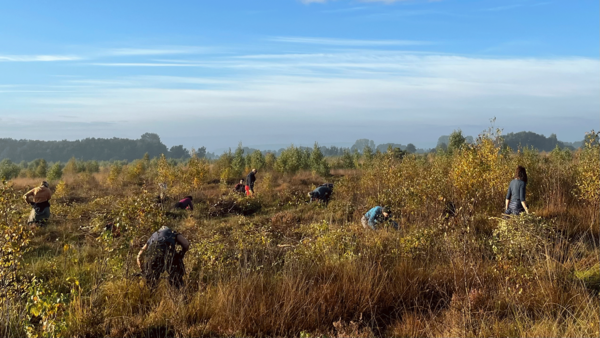
What was a typical day like?
Stefan: “We were woken up at 6 o'clock in the morning and drove to the bog at 7:30 in two minibuses. There we always worked until about 4:30 pm. Afterwards we went back to the accommodation and could organize our evening freely. In between there were always excursions on site or lectures, with the opportunity for us to ask questions and learn something new.“
What were your tasks on the ground?
Martin: “Our main task was to remove numerous small trees from the peatland areas. After de-bushing, the areas can be managed again by the moorland sheep – a breed of sheep that are excellently adapted to the environment. They eat the young birch trees, their leaves and moor grass.”
What does de-bushing mean?
Martin: “In landscape management, de-bushing refers to the removal of young woody plants from heath areas, wet meadows and drained bogs. It involves using saws and loppers to remove emerging woody growth, which consists of pioneer tree species such as pine and birch. It feels a bit strange to cut down trees for climate protection, but removing tree growth is necessary to re-wet the bogs. De-bushing is a form of cultural landscape management designed to maintain bogs that would otherwise develop into forest. This also prevents excessive evaporation from woody plants.“
What was particularly challenging for you?
Stefan: “Getting up early at 6 a.m. and the tight schedule in the morning were unfamiliar to me. I had to get used to that.“
Martin: “For me, it was particularly challenging to manage my energy throughout the day. Especially after the first two days, I was already totally exhausted by noon.“
What did you enjoy the most?
Martin: “I enjoyed sawing the countless trees. At times it was even very meditative. We also had the opportunity to tread on a “swinging lawn”, which is otherwise forbidden. This is a plant cover of mosses that floats freely above the water and, as the name suggests, moves when you step on it.“
Stefan: “I really enjoyed working in the group. It created a great sense of community. It was motivating to have achieved something at the end of the day. And after the very high physical effort during the day, the hearty vegan dinner tasted all the better – it was incredibly delicious!“
The conclusion after a week in the peatlands
In total, Martin and Stefan have removed trees from a 1.36 hectare area. In a few years we’ll see whether the implemented measures have the desired effect. The bogs take a while to react, but are then relatively stable as far as longer dry periods are concerned. However, there is the risk of dry years which would also severely affect these ecosystems in the future and dry out the bogs in the long term.
Martin: “At Kiwigrid, we have been working every day for seven years to support the long overdue energy transition. We believe that making another important contribution to climate protection in the Diepholz Moor is an excellent complement to this. The Bergwaldprojekt e.V. association makes it possible for everyone to become active themselves. We were really up for it and it was worth it. The week in the peatlands and the physical work were of course very strenuous for both of us, but at the same time very enriching.“
Stefan: “It was really fun to create something together in this small group of very different people and it fascinated me how quickly we all cleared this large area together. The experience of being completely surrounded by nature out there in the peatlands and enjoying the absolute silence really touched both of us. Next year we will most likely participate in a similar project again.“
Check out more content from our Kiwigrid team on our LinkedIn channel!
